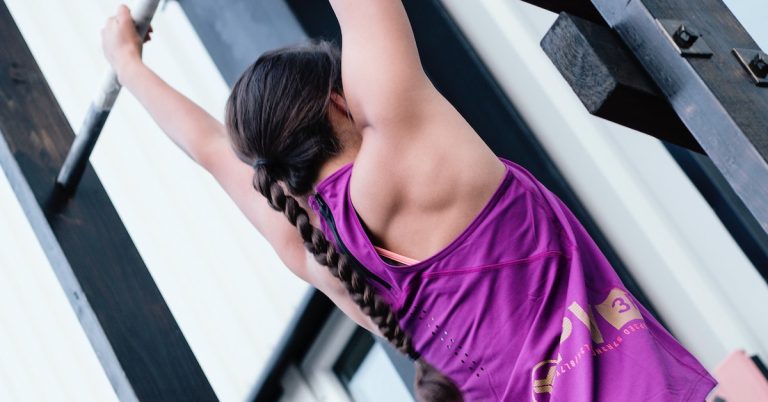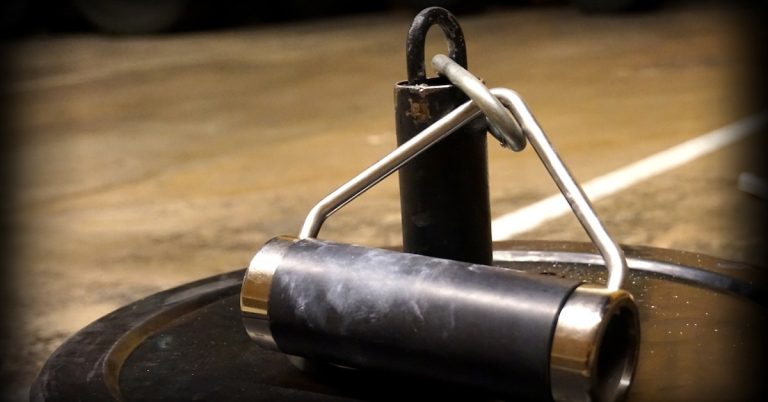Most people add to their wardrobe at least once a year. I like to add to my artillery of muscle-building weapons. This year, for instance, I picked up a safety squat bar, a couple of Swiss bars, a bunch of kettlebells, and some other toys – mainly the type of stuff that I can fit in the limited space that I have, but lately, I’ve been getting the itch to go bigger.
I’ve been thinking about upgrading my power rack. Don’t get me wrong, this rack has served me well over the years (actually, for two decades now), but there are a few things that it doesn’t have that I would love to have. In particular, I would love more versatility in terms of chin-ups and pull-ups.
My rack has a straight bar for this purpose, and that’s it. Of course, I add things to it – check out this video as an example – and you can purchase attachments. The problem is that most attachments cause you to start in a lower position relative to the bar, and if you use additional weight added to a chin/dip belt, that weight is going to hit the floor before your arms are fully extended. If you decide to go with a weighted vest instead, it normally bunches up and gets in your way as you’re pulling upward. It just doesn’t work well.
The Poliquin Rack manufactured by Atlantis Fitness Equipment and designed by strength coach Charles Poliquin has been on my radar for a while now. I’ve been contemplating getting one, and I have the ceiling height to do it. I spent over $20,000 when I had my house built to get an extra foot of height in the basement, and Atlantis offers an 8-foot tall option with the Poliquin rack, so height is not an issue.
What is an issue, however, is floor space. The Poliquin rack takes up more room space than my current rack, which is a commodity I just don’t have. I need things to be as compact as possible. As much as I would love to get a Poliquin rack, it would make things too tight in the space that I have, but I came up with a solution…
It dawned on me one day that those new Swiss bars can provide all the chin-up options that the Poliquin rack would. All I need to set it up, believe it or not, are two yoga mats. That’s it!
Here’s how it works:
Draping the yoga mats on each side first helps to protect the power rack and prevent the bar from slipping.
You can use any bar you like – a straight bar, EZ curl bar, Swiss bar, trap bar – whatever fits across your power rack will work. This will provide you with multiple grip options in terms of width (wide, medium, and close) and orientation (supinated, semi-supinated, neutral, semi-pronated, pronated, and mixed).
Don’t sweat it if you only have standard-grip bars in your collection. You could always use a rolled-up towel to fatten the grip or pick up a pair of Fat Gripz and you’re covered – they even come in different diameters now.
You can do a different chin-up or pull-up option every month and go through a whole year without ever repeating the same version twice. Talk about variety! That should help get things going again if your progress has stalled because you ran out of options.
I consider the chin-up or pull-up as the “deadlift” of the upper body. These movements should be a staple in your training, but you shouldn’t do them the same way every time. Vary the grip width, diameter, and/or orientation slightly and all of a sudden, an “oldie but goodie” becomes a whole new exercise that your body has to adapt to… and that will prompt new growth!
With some ingenuity, you can get a lot out of limited space with the equipment that you already have. If you have the ceiling height and floor space for a Poliquin rack, go for it. If not, try my homemade version.
Note: To learn how to implement multiple-grip variations of chin-ups and pull-ups into your training, check out my new ebook Lean and Mean.

The Periodization Blueprint for Chin-Ups and Pull-Ups
Exciting news! Just got my hands on Swissies45, and they’ve transformed my chin-up game. No more draping an EZ-Curl bar

Unleash Your Grip Strength: Elevate Your Performance with IronMind Implements
Are you ready to take your grip strength to the next level? Look no further than IronMind implements. These versatile

The 3/7 Method for Size and Strength
A new strength training protocol has surfaced that will help you maximize strength gains with less training time and effort.
follow
Error: No feed with the ID 2 found.
Please go to the Instagram Feed settings page to create a feed.
